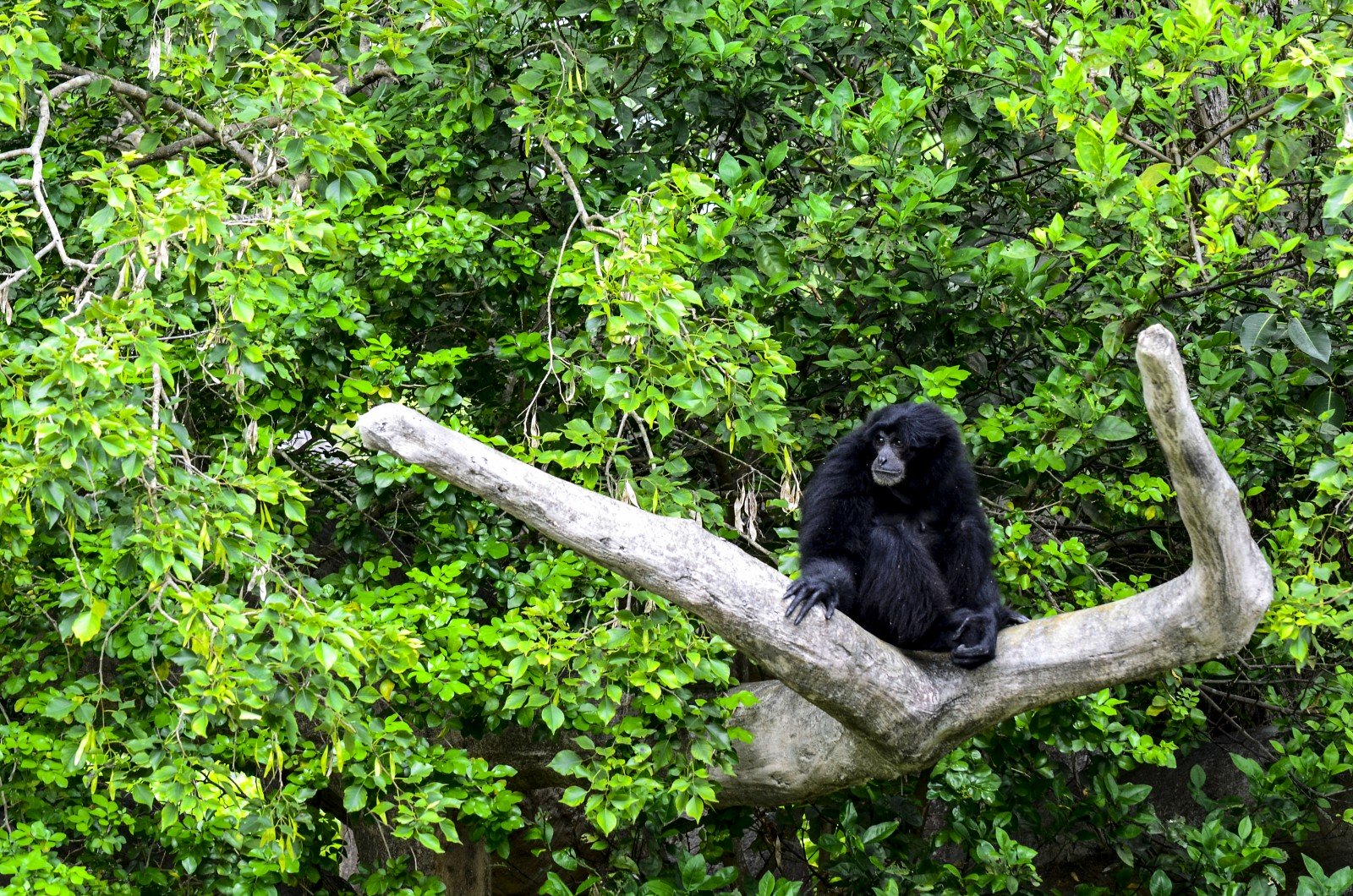The Significance of Monkeys in Zoo Miami: A Respectful Biologist's Perspective

Monkeys, as fascinating and diverse primates, have always been an object of curiosity for both scientists and the general public alike. Zoo Miami, a world-renowned institution, plays a significant role in showcasing these captivating creatures and contributing to their conservation, research, and public education. As a respectful biologist, I appreciate the delicate balance between human intervention and the natural world, and in this essay, I will explore the importance of monkeys in Zoo Miami, the challenges faced in their captivity, and the ethical considerations that must be taken into account when managing these intelligent animals.
The Role of Monkeys in Zoo Miami
Zoo Miami houses several species of monkeys, each with its own unique characteristics, behavior, and ecological role. These primates are integral to the zoo's mission of promoting conservation, research, and public education. By providing visitors with an opportunity to observe and learn about these animals, the zoo helps to foster a greater understanding and appreciation for their existence and the need to protect their habitats.
Among the many monkey species found in Zoo Miami are the white-faced saki, golden lion tamarin, and the black howler monkey. Each of these primates offers a unique glimpse into the world of monkeys and their distinct adaptations for survival.
The white-faced saki (Pithecia pithecia) is a small, arboreal primate native to the rainforests of northern and central South America. With its striking facial features and strong, agile body, this species is adept at navigating the forest canopy in search of food. The presence of white-faced sakis in Zoo Miami allows researchers to study their behavior, social dynamics, and reproductive biology, which can inform conservation efforts in their native habitats.
The golden lion tamarin (Leontopithecus rosalia) is a critically endangered species native to the Atlantic Forest of Brazil. With its vibrant golden fur and lion-like mane, this small primate is a striking ambassador for conservation. Zoo Miami participates in international conservation programs, such as the Golden Lion Tamarin Conservation Program, which focuses on habitat restoration and reintroduction efforts to bolster wild populations.
The black howler monkey (Alouatta caraya) is known for its loud vocalizations that can be heard up to three miles away. Native to South America, this species is facing habitat loss due to deforestation. Through their presence in Zoo Miami, these primates serve as a reminder of the importance of preserving their natural habitats.
Challenges of Captivity and Enrichment
Despite the numerous benefits of housing monkeys in zoos, there are inherent challenges that must be addressed. Monkeys are highly intelligent and social creatures that require complex and dynamic environments to thrive. Zoo Miami's animal care staff works diligently to provide appropriate enrichment, social opportunities, and habitats that cater to the specific needs of each species.
Enrichment is a critical aspect of primate care in zoos, as it promotes mental and physical stimulation, reduces stress, and encourages natural behaviors. Zoo Miami employs a variety of enrichment techniques for its monkeys, including puzzle feeders, foraging opportunities, and social interactions with other individuals or species. Additionally, the design of their enclosures emphasizes vertical space and varied substrates, mimicking the complex arboreal habitats found in the wild.
Ethical Considerations and Conservation Efforts
As a respectful biologist, I recognize the importance of considering the ethical implications of keeping monkeys in captivity. While zoos like Zoo Miami have made significant strides in improving the welfare of their animals, there remains a responsibility to ensure that the benefits of captivity outweigh the potential negative impacts on these intelligent creatures.
One of the primary justifications for keeping monkeys in zoos is the opportunity to contribute to conservation efforts. Zoo Miami participates in various conservation initiatives, including Species Survival Plans (SSPs) and field research programs that aim to protect and restore wild populations of primates. Through these efforts, the zoo not only contributes to the preservation of monkey species, but also raises awareness and fosters public support for conservation.
Education is another crucial aspect of Zoo Miami's mission. By providing engaging and interactive educational programs, the zoo helps to instill a sense of wonder and appreciation for monkeys and their natural habitats in visitors. This, in turn, can inspire future generations to become stewards of the environment and advocates for wildlife conservation.
Nevertheless, it is essential to continually evaluate the quality of life for monkeys in captivity, ensuring that their physical, emotional, and social needs are met. This involves ongoing research into their natural behaviors, social dynamics, and environmental preferences, as well as the development of innovative enrichment strategies to keep these intelligent animals engaged and healthy.
In conclusion, monkeys in Zoo Miami play a significant role in advancing conservation, research, and public education initiatives. While the challenges of captivity must be carefully considered and addressed, the potential benefits for both the individual animals and their wild counterparts are substantial. As a respectful biologist, I advocate for the responsible management of these incredible creatures in zoos, ensuring that their welfare remains a top priority while also harnessing the unique opportunities for research, education, and conservation that these institutions provide.
By fostering a deeper understanding and appreciation of monkeys, institutions like Zoo Miami can inspire visitors to take an active role in preserving these remarkable animals and their natural habitats, ultimately contributing to a more sustainable and compassionate world for all.